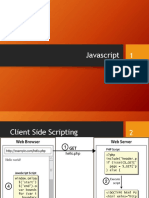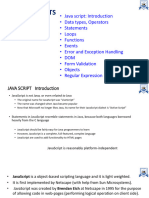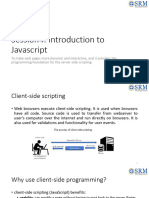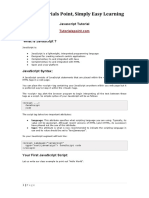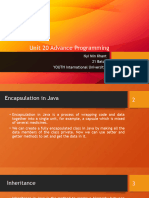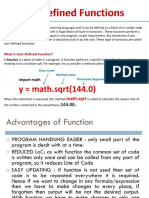0% found this document useful (0 votes)
34 views73 pagesUnit 3-Javascript
This document provides an introduction to JavaScript, highlighting its role in client-side scripting for dynamic web pages. It compares JavaScript with PHP and Java, emphasizing its unique features such as being interpreted, loosely typed, and event-driven. The document also covers JavaScript syntax, data types, variables, and how to use JavaScript within HTML documents.
Uploaded by
bharti saxenaCopyright
© © All Rights Reserved
We take content rights seriously. If you suspect this is your content, claim it here.
Available Formats
Download as PPTX, PDF, TXT or read online on Scribd
0% found this document useful (0 votes)
34 views73 pagesUnit 3-Javascript
This document provides an introduction to JavaScript, highlighting its role in client-side scripting for dynamic web pages. It compares JavaScript with PHP and Java, emphasizing its unique features such as being interpreted, loosely typed, and event-driven. The document also covers JavaScript syntax, data types, variables, and how to use JavaScript within HTML documents.
Uploaded by
bharti saxenaCopyright
© © All Rights Reserved
We take content rights seriously. If you suspect this is your content, claim it here.
Available Formats
Download as PPTX, PDF, TXT or read online on Scribd
/ 73








